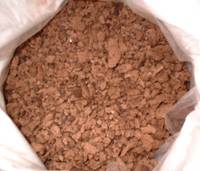Prairie Swine Centre looks at low cost feed

Prairie Swine Centre President and CEO, Dr John Patience, says feed typically represents between 50 and 75% of the total cost of pork production in Canada and the energy component alone represents about 25% of the cost of production. The Centre is therefore looking at strategies producers can use to reduce operating costs without incurring additional expense, according to an article on Farmscape.com.
John Patience: “Producers have tended to focus much of their attention on the amino acid content of the diet, the protein because that’s what drives lean gain and that’s what produces a lean carcass which is what the consumer wants. And also producers have focused on things like vitamins and minerals because those contribute to the health of the pig and those components certainly are very important but we would suggest that the highest priority, after you’ve dealt with the issue of what is the objective of the feeding programme, should be on energy levels, selecting the correct energy level.
Our research and analysis has shown that, depending on your success in selecting that right energy level for your feeding programme, you could increase your net profit by anywhere from a dollar to CAD13 (US$13) per pig. In other words if you’ve got it really wrong you’re wasting CAD13 per pig and if you’ve got it really right then you’re where you need to be but we think in many circumstances there is somewhere probably one to three dollars a pig available just by fine tuning the energy levels given the current cost of energy, i.e. wheat and corn compared to six months ago even.”
Dr. Patience further states that focussing on energy levels will dictate to some extent the ingredients that can be considered but, he notes, there is a diverse array of choices. Because the cost of those ingredients are changing so rapidly, he recommends reformulating diets every couple of weeks.
Related website:
• Farmscape











